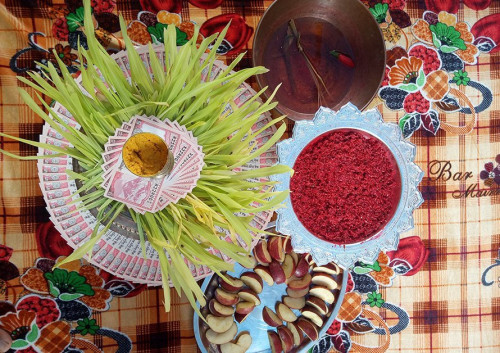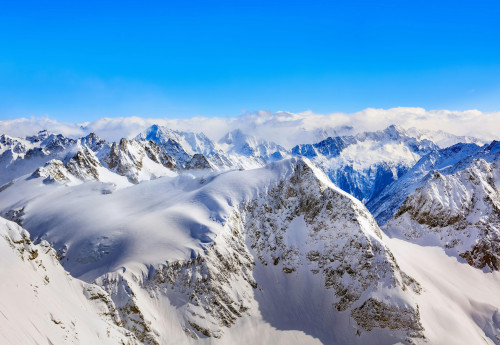17th Apr, 2025
UNESCO World Heritage Sites in Nepal
- Magnificent Himalayan Treks
Due to its geographical location as a nation located between India and China, Nepal sits at the cultural crossroads, with an intertwining of enormous numbers of ethnic groups and influences.
This syncretism can be seen in its rich architectural heritage because Nepal has affected and been affected by design across the Himalayas and beyond for several centuries.
One of the first things that most tourists visiting Kathmandu's ancient sites notice is how similar much of the pagoda-style temples and palaces appear to their counterparts in East Asia.
Table of Contents
Kathmandu Durbar Square
Kathmandu Durbar Square is one of the best places to visit in Kathmandu and is a Nepal UNESCO World Heritage Sites.
The location starts from New Road's streets.You will have mixed and vibrant feelings once you cross the gate of New Road. The location is always jam-packed because there are shops present there.
After enjoying the scenic Basantapur roads, you will then find yourself entering the Kathmandu Durbar Square. The square is huge, so your eyes will need to stretch a lot.
You can even go food hunting in Kathmandu Durbar Square. Nepali local foods feature bara, Syapu Micha, Yomari, sel roti, Thakali Khana, Sekuwa, Aila, and Nepali Dumplings (Momo).
You can extend your Durbar Square tour by going to Asan Market. From wholesale markets to big malls, you can get anything you wish for yourself.
Key Features of the Kathmandu Durbar Square
Uncovering rich local Nepali culture.
More than 50 temples in the area.
Kumari Ghar, home of a god named "Kumari".
Tribhuwan Museum.
Kal Bhairav temple, Kasthamandap, and many other key sites.
Western to cultural restaurants and cafes with hippie, cultural ambiance.
Kathmandu Durbar Square Ticket Charges
They do not take any Nepali citizens within Kathmandu Durbar Square.
For SAARC individuals, the charge is Rs.150.
The charge for foreigners is Rs.1000.
BHAKTAPUR DURBAR SQUARE
Number two is Bhaktapur Durbar Square, another Nepalese marvel that is a UNESCO World Heritage Sites in Nepal.
The square is beautiful and has historical icons such as the well-preserved temples, palaces, courtyards, and streets that portray the ancient history of Bhaktapur.
As has already been stated, Bhaktapur Durbar Square is situated in the center of Bhaktapur city, 13 km from Katmandu. When you enter the Bhaktapur Durbar Square, you are welcomed by a huge open space with beautiful wood carvings, sculptures, and metalwork surrounding it.
The space is less crowded than that of Kathmandu Durbar Square, hence creating a great chance for one to enjoy the view of the space well.
While at Bhaktapur Durbar Square, it is nice to try some Nepali cuisine. Some of the local food there include Juju Dhau (king yogurt), home-made 'Bhaktapur style' moms, bara and Chatamari, and Thwon, a rice beer.
You may spend more time at Taumadhi Square with Nyatapola Temple or Dattatreya Square, which boasts a three-storey pagoda-style temple. Or you may go to Pottery Square where you can see local artisans at work making pottery.
Major Attractions of Bhaktapur Durbar Square
Rich traditional Newari heritage and culture.
More than 30 temples and ancient buildings.
55-Window Palace.
Vatsala Temple and stone bell.
Nyatapola Temple at Taumadhi Square.
Dattatreya Temple and Peacock Window.
Some local shops sell traditional crafts and souvenirs.
Bhaktapur Durbar Square Ticket Fees
The entrance fee for Nepali citizens is free.
For SAARC citizens, the fee is NPR 500.
For foreign visitors, the fee is NPR 1,500.
Patan Durbar Square
Another fine instance of UNESCO World Heritage sites in Nepal is Patan Durbar Square in Lalitpur.
Patan Durbar Square has become popular because of its Newari architecture, ancient temples, and royal courtyards, which will always remind the Nepalese of their prosperous heritage.
Patan Durbar Square is located some 5 kilometres south of Kathmandu in Lalitpur. If you are coming from a nearby area within the town, you can reach the locality by taxi, bus, or on foot.
When you approach the area named Patan Durbar Square, you will be astonished at the beautiful wood and stone carvings and the great palace and temple.
So, you can also taste Nepali cuisine during the time of visiting the area. Yomari, Bara, Chatamari, and Newari Khaja Set are a few popular Nepali dishes. Moreover, identify the wonderful Patan-style momo recipe and local desserts.
As you cut short your time close to the temple, utilize it on other aspects, for instance, going to the Golden Temple (Hiranya Varna Mahavihar), Kumbeshwar Temple, and Mahaboudha Temple.
You can also go to the Patan Museum, which houses several specimens of traditional art and the exhibition regarding the history and formation of the area is available.
Principal Attraction at Patan Durbar Square
Affluent Newari culture and architecture.
More than 30 historic buildings and temples.
Stone Krishna Mandir temple with decorated carvings.
Hiranya Varna Mahavihar (the Golden Temple).
Bhimsen Temple and Vishwanath Temple.
Patan Museum for local crafts and art.
Several local shops which have traditional souvenirs and crafts.
Patan Durbar Square Ticket Prices
The entry fee for Nepali citizens is free.
For SAARC countries, it is NPR 250.
For foreign nationals, it is NPR 1,000.
Changu Narayan Temple
One of the oldest Hindu temples of Nepal, Changu Narayan Temple, a UNESCO World Heritage Sites in Nepal, sits atop a hill in Bhaktapur district and blends ancient art, architecture, and rich culture.
Changu Narayan Temple is situated about 12 kilometers to the east of Kathmandu. It can be accessed by local bus or taxi from Bhaktapur or Kathmandu.
The trip to the temple provides scenic views of the countryside.
You will be greeted by the serene ambiance and beautiful architecture at Changu Narayan Temple. The temple, dedicated to Lord Vishnu, houses Licchavi-era vines (4th to 9th century).
Savor some local snacks and delicacies while walking in the area around Changu Narayan Temple. Yomari, Sel Roti, Bara, and local Newari cuisine are some of the well-known foods found in the area, which can be sampled in local restaurants.
Extend your journey by exploring nearby villages and nature walks. One may also visit the nearby town of Bhaktapur to explore its own Durbar Square and other historical landmark
Changu Narayan Temple Ticket Prices
The Nepali national entrance fee is free.
The SAARC nationals' fee is NPR 300.
The foreigners' fee is NPR 1,000.
Swoyambhunath Stupa
Swayambhunath Stupa, also known as the Monkey Temple, is probably the most famous and the oldest in Kathmandu. It is 2,205 metres above sea level and has a scenic view of the valley.
It is a Hindu and Buddhist temple. Swayambhunath Stupa is situated towards the western end of the Kathmandu Valley, roughly 3 kilometres from the city centre.
If you are from the nearby region, you can travel to the stupa by taxi, local bus, drive, or easy trek.
This raises one's spirits for a few minutes so you may drive or walk up the 365 steps that lead to the stupa in order to view good views of the city.
Throughout the top of the building, the tourist will be awed by whitewashed domes, gold plated spire, and the 'All-Seeing Eye of Buddha'.
Stupas, shrines, and less prominent temples predominate in this complex.
Other facilities such as prayer wheels, multicoloured prayer flags, and a band of monkeys contribute to the vibrant spirituality of the venue.
Additionally, on one side of the stupa are food stalls and sweet shops. The usual repertoire is Tibetan bread, momo, a variety of local dimming, and thukpa, a noodle soup.
Drinking some butter tea or a lassi from street vendors may be in order. You may spend more time in the Swayambhunath complex by visiting other temples and shrines.
Other interests within walking distance include the National Museum of Nepal and the Natural History Museum.
Major Features of Swayambhunath Stupa
Panoramic view of the Kathmandu Valley.
White stupa with all-seeing eyes of the Buddha.
Other small stupas, shrines, and temples in the complex.
Peaceful atmosphere that is ideal for meditation and contemplation.
A rich history and cultural heritage.
The monkey population gave it the alternative name "Monkey Temple."
Swayambhunath Stupa Ticket Charges
The entry charge for Nepali citizens is free.
For SAARC nationals, the fee is NPR 50.
For foreigners, the fee is NPR 200.
Boudhanath Stupa
Boudhanath Stupa is one of the biggest stupas in the Kathmandu Valley and a very significant Buddhist shrine. Swayambhunath is on the northern limit of Kathmandu and is marked by the giant mandala and stupa in the background.
It's a beautiful and serene location which is also a place of faith and cannot be missed.
Boudhanath Stupa is approximately 11 kilometres from the center of Kathmandu. The city's central business district is nearby, and it is accessible by taxi, rickshaw, or car.
It is a colossal round building with a white outside finished with a golden spire—the Boudhanath Stupa. The two 'Eyes of Buddha' symbolize omniscience, which can be seen in the sculpture on all four cardinal sides of the stupa. In addition to the big central stupa, there are numerous little stupas, monasteries, and real Tibetan boutiques and cafes.
Boudha market is situated right next to the stupa, where there are a lot of shops and restaurants that sell original Tibetan products and foods.
Just like in other nations of Asia, Little Nepal also has reputation for its food like Tibetan bread, Keema Noodles, laphing, momo, and thukpa. As you leave, you should not miss the butter tea or sweet lassi at the nearby café.
For the curious tourists, Kopan Monastery has stunning views and insight into Tibetan Buddhism. Pashupatinath Temple, the sacred Hindu temple, is just a few kilometres away.
Main Highlights of Boudhanath Stupa
Large and symbol stupa with golden spire.
Panoramic views and spiritual ambiance.
Monasteries and Tibetan-themed stores surrounding it.
Busy ambiance with prayer wheels and flags.
It's a major Buddhist pilgrimage destination.
Boudhanath Stupa Ticket Prices
Nepali citizens have a free entry fee.
SAARC nationals must pay NPR 50.
Foreigners must pay NPR 400.
Pashupatinath Temple
Pashupatinath Temple is yet another Hindu Temple on the banks of the holy river Bagmati in Kathmandu. It has been designated by UNESCO as a world heritage site.
It is one of the ancient temple complexes on the bank of the Bagmati River in Kathmandu. It is also called 'Pashupatinath Temple'. It is dedicated to Lord Shiva, the destroyer according to Hinduism.
Pashupatinath temple is situated towards the east of Kathmandu valley, approximately 5 kilometres from the city centre.
It is easily reachable by taxi, rickshaw, or minibus, which takes the visitors to the religious structure with a roof top.
The main shrine of the complex is a beautifully architectural pagoda under a four-doored silver-gilded tin roof. The deity of the place is Lord Shiva, whose symbol, lingam, is housed in the temple. The temple's architecture is a typical example of traditional Hindu temple architecture. Practically, the Bagmati River runs alongside the temple.
The famous Pashupatinath Temple is vibrant and full of positive energy. The pilgrimage site is toured by devotees who go there to offer worship and take part in rituals and ceremonies.
The temple is full of life during some of the Hindu festivals such as Maha Shivaratri, where thousands of pilgrims go to worship.
It is also nice to see the Aarti being done rhythmically at the Ghat of Bagmati River in the evening, with music of chanting and lighting lamps. There are also some small shops beside the temple selling Nepali and Indian snacks, such as samosas.
Key Features of Pashupatinath Temple
The golden-roofed pagoda-style main temple is awe-inspiring.
The sacred linga of Lord Shiva is the object of veneration in the temple.
The Bagmati River and ghats are utilized in ritual rituals.
The vibrant atmosphere is especially experienced on occasions like Maha Shivaratri.
Evening Aarti along the river is an interesting and pious activity.
It is a significant destination for Hindu pilgrims as well as cultural travelers.
Pashupatinath Temple Ticket Prices
The Nepali citizen entry fee is free.
For SAARC nationals, it is NPR 100.
For foreigners, it is NPR 1000.
Lumbini – Birthplace of Lord Buddha
A place of pilgrimage in Nepal's Rupandehi District, Lumbini is famous globally as the birthplace of Lord Buddha or Siddhartha Gautama. This is recorded as a UNESCO World Heritage Sites in Nepal and a popular place of pilgrimage among Buddhists and those seeking enlightenment.
Lumbini, the birthplace of Lord Buddha, is situated approximately 300 km west of Kathmandu. The site can be reached by domestic flights from Kathmandu to Siddharthanagar (Bhairahawa) airport and then a short drive.
There are also other ways of reaching Lumbini, such as by road transport for Lumbini from Kathmandu, which takes approximately 8-10 hours by bus or private car.
The main religious location is the Maya Devi Temple, which is the birthplace of Queen Maya Devi, where she gave birth to Prince Siddhartha.
Currently, within the temple grounds is an old stone bathtub, which was Siddhartha's birthing tub, the sacred grove, and the Ashoka Pillar, which signifies the visit of Emperor Ashoka in the 3rd century B.C.
The area around Maya Devi Temple is well maintained with plants, lotus pools, and some archaeological remains. The area is dotted with numerous varieties of monasteries and stupas constructed by different Buddhist nations with varying architectural designs and spiritual atmospheres.
Apart from the Maya Devi Temple and the sacred garden, there are other places of interest, such as the Lumbini Museum, which display fossils alongside other remains of the life of Buddha and Buddhist history.
The town of Siddharth Nagar nearby provides other cultural sites as well as bazaars.
Major Attraction of Lumbini
The place where Lord Buddha was born is the Maya Devi Temple.
The ancient Ashoka Pillar and the sacred garden.
The serene environment is ideal for meditation.
Monasteries and stupas of various types were built by different countries of Buddhist origin.
The Lumbini Museum houses Buddhist history and artifacts.
The greenery, lotus ponds, and historic ruins.
Lumbini Ticket Prices
The Nepali citizen entry is free.
SAARC nationals are charged a fee of NPR 100.
For foreign nationals, it costs NPR 200.
Chitwan National Park
Chitwan National Park is one of the celebrated wildlife parks of southern Terai Nepal and one of the UNESCO World Heritage Sites of Nepal. It is celebrated not only for its biological wealth but also for its conservation policies and offers a vehicle to travel to the grasses and lowland forests of Nepal.
Chitwan National Park is about 150 kilometres by air south-west of the Nepalese capital city, Kathmandu.
There can be a drive to the park, and it will take around 5-6 hours, or take a short internal flight from Kathmandu to Bharatpur Airport and drive to the park for a while.
There is good transportation to the park, and the park is accessible with ease to visitors.
Chitwan National Park has a total area of approximately 932 square kilometres and has a variety of wildlife species like the one-horned rhinoceros, Bengal tiger, and Asian elephants.
Jeep tours, nature trekking, and boat rides along the various rivers within the park are available to tourists. The park also has plenty of bird species residents, and this attracts many bird watchers to come and observe the various species of birds.
Activities and Experiences
Jeep Safari:
Specialized Jeeps will tour you around the park's various ecosystems, ranging from forests to grasslands. This is one of the best ways to spot big game animals such as rhinos and tigers.
Jungle Walk:
As part of a guided walk, you can join a park naturalist and see the park and its smaller residents closely.
Canoe Ride:
Take a boat tour around the different rivers in the park and try to spot some of the wildlife, like gharials snapping fish or some of the numerous birds in the park.
Elephant Safari
It is a traditional activity that suits all those who want to explore the park and wildlife on the elephant's back. It is a beautiful means to view the park and its animals.
Foods that are normally sold include Dal Bhat (Lentil soup with rice), Momos (Steamed dumplings), and Tharu foods.
Food items prepared by the Tharu people are served using Tharu local spices and herbs in order to maintain the original taste.
Nearby Attractions
Tharu Village Tour
Get exposed to the local Tharu villages to understand the culture and traditional lifestyle of the Tharu people, the native inhabitants of the region.
Elephant Breeding Centre
Located in the vicinity of Sauraha, this centre focuses on the breeding and nurturing of elephants, allowing for interaction with these huge animals.
Major Chitwan National Park Features
Large biodiversity of which include the one-horned rhinoceros, Bengal tigers, and Asian elephants.
Safaris can take the form of jeep safaris, jungle walking, and canoeing.
Species of birds and natural habitats.
Contact with local Tharu ways of life and cuisine.
Pleasant landscapes from dense woods to open savannahs.
Chitwan National Park Entry Fee
Nepalese citizens: NPR 150 (park entrance).
SAARC citizens: NPR 1,000 (park entrance).
For non-nationals: NPR 2,000 (for entry into the park).
Sagarmatha National Park
Sagarmatha National Park is a UNESCO World Heritage Sites of Nepal in Solu Khumbu region of Nepal.
Because it is the world's highest summit, Mount Everest. It is famous for its breathtaking geography, rich wildlife and stunning Sherpa culture for nature enthusiasts and trekkers.
Sagarmatha National Park lies in Solu-Khumbu in the country and is about 200 km to the northeast of the capital, Kathmandu.
Lukla, which marks the park entrance, receives daily flights, though at times they are halted due to fog.
It has a size of 1,148 square kilometres and offers sophisticated features regarding geographical composition, i.e., high mountain ranges, deep valleys, glaciers, and forests.
Its most alluring feature is the Mount Everest, commonly known as Sagarmatha by the Nepalese, which is 8,848 metres tall. Tourists can also see other mountains such as Lhotse, Nuptse, and Ama Dablam.
In Sagarmatha National Park, vegetation and animal life are also gigantic. You will most likely find rhododendrons and pine and birch forests at the lowest elevation. Climbing higher on the mountain slopes, the flora ranges from quelling to alpine for shrubs and grasses.
Activities and Attractions
Trekking
The park also features different popular trails, including the Everest Base Camp trek, the Gokyo Lakes trek, and the Three Passes trek. These kinds of trails allow visitors to have fantastic views and experience the lean Sherpa soul.
Mountaineering
Apart from trekking, Sagarmatha National Park is predominantly famous for mountaineering; people climb Mt. Everest and other peaks.
Cultural Experience
Traditional Sherpa towns that visitors may visit to experience festivals and traditions, among others, are some of the natural sights.
During your trek through the park, teahouses and hotels will serve traditional Nepali and Tibetan food. You can sample the favorite dishes, dal Bhat (rice with lentil soup), momo (dumplings), and thukpa (noodle soup).
You may even have a cup of tea or hot chocolate to warm you after trekking.
Apart from the natural scenery of the park, you can also visit the Namche Bazaar town nearby, a bustling hub for trekkers with various services, stores, and cultural sites.
Tengboche Monastery is another significant cultural place where you can see a high-altitude, beautiful view of Everest.
Key Sagarmatha National Park Attractions
Mount Everest, the highest mountain in the world.
Scenic views, such as glaciers, deep valleys, and high mountains.
Abundant wildlife, including rare species like the snow leopard and red panda.
Renowned trekking routes with stunning views and cultural experiences.
Traditional Sherpa villages and vibrant local culture.
Nepalese citizens: Free.
SAARC Citizens: NPR 1,000.
Foreigners: NPR 3,000.
Conclusion
The joy you will get after visiting Nepal will offer you peace and happy. These enlisted world heritage sites are the architectural and the must visit places in Nepal. Make sure you enjoy every second here. The main is Pashupatinath where thousands of pilgrimmes go to visit with the belief in god.
Recent From Blog
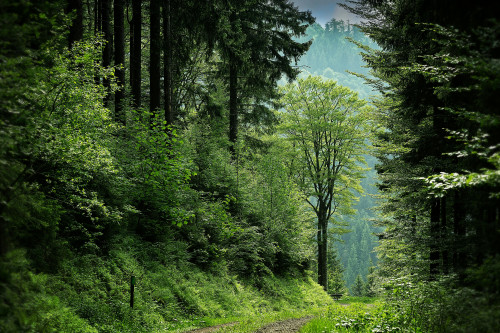
13th Oct, 2025
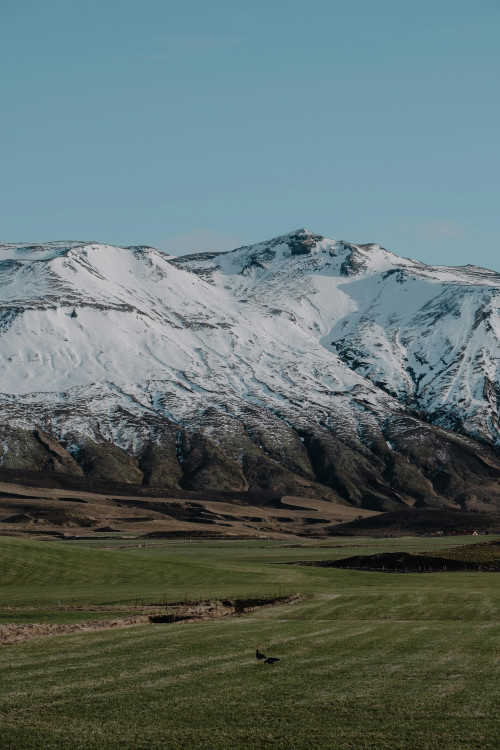
9th Oct, 2025

21st Sep, 2025
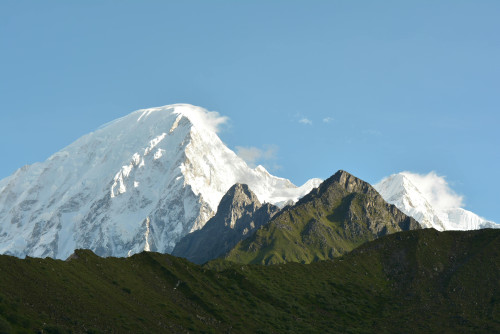
18th Sep, 2025

14th Sep, 2025

3rd Sep, 2025

28th Aug, 2025
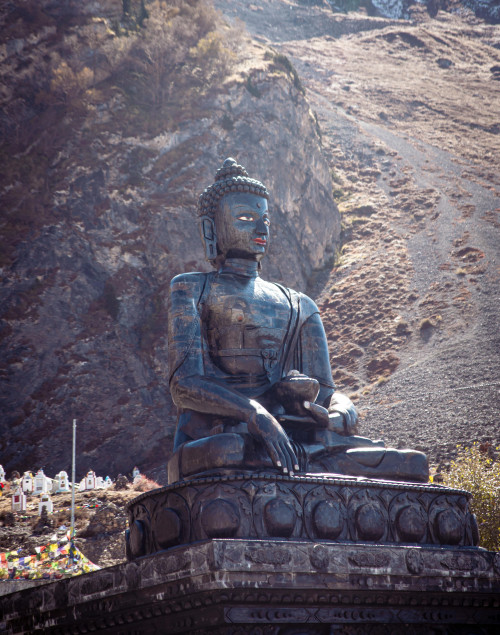
25th Aug, 2025
